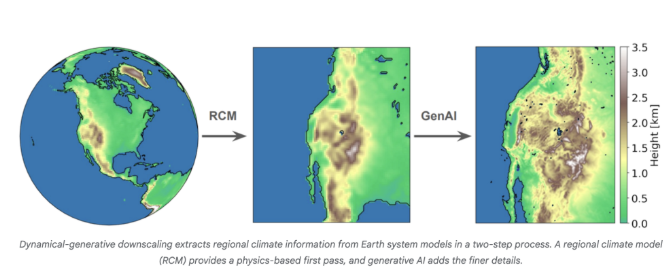Google AI Revolutionizes Climate Predictions with 10km Accuracy
Earth system models play a crucial role in predicting environmental changes, yet their high computational demands often limit resolution to around 100 kilometers—roughly the size of Hawaii. For practical applications like agriculture and disaster response, city-scale predictions at 10 kilometers are essential. Now, Google researchers have pioneered a breakthrough solution.

AI Meets Climate Science: The Dynamic Generative Downscaling Method
The team has developed "dynamic generative downscaling," which merges traditional physical climate modeling with cutting-edge generative AI. This approach uses diffusion models—AI systems adept at learning complex patterns—to refine global climate predictions into hyper-local forecasts. The method not only bridges the gap between broad models and real-world needs but does so at a fraction of traditional costs.
R2D2: Smarter Forecasting Through AI
Traditional dynamic downscaling methods, while accurate, require prohibitive computational resources. Google's solution introduces R2D2, a two-stage process that first uses physical simulations to reach intermediate resolutions, then employs generative AI to add fine details. By focusing on differences between resolution levels rather than recreating entire datasets, R2D2 achieves remarkable efficiency while maintaining accuracy.
The results speak volumes: when tested on western U.S. climate data and validated against seven other forecasts, the AI model reduced prediction errors by over 40% for key variables like temperature and wind speed. It also excelled at capturing complex weather phenomena—from drought-inducing heatwaves to wildfire-triggering wind patterns—that often elude conventional methods.
A Game-Changer for Climate Adaptation
This innovation slashes computational costs by up to 85% compared to traditional high-resolution simulations. For policymakers and planners, it means access to actionable local climate insights without prohibitive expenses. From optimizing crop cycles to reinforcing infrastructure against extreme weather, the implications are profound.
The technology's ability to process vast climate datasets while preserving uncertainty ranges makes it particularly valuable for long-term planning. As climate change intensifies, such tools will become indispensable for communities worldwide.
Research details: Google Research Blog
Key Points
- Google's AI method achieves unprecedented 10km resolution in climate predictions
- Combines physical modeling with generative AI for 40% greater accuracy
- Reduces computational costs by 85% compared to traditional methods
- Excels at predicting extreme weather events and local phenomena
- Enables smarter decisions in agriculture, infrastructure, and disaster preparedness